Save on Groceries Now by embracing “Farm to Table”
Did you know you can support local agriculture AND save money on your grocery bill? Yep. It’s true. It‘s a win-win for me, and hopefully, it will also be for you, especially after you learn about the good it can offer not just to your wallet, but also to your health, your community, and the environment.
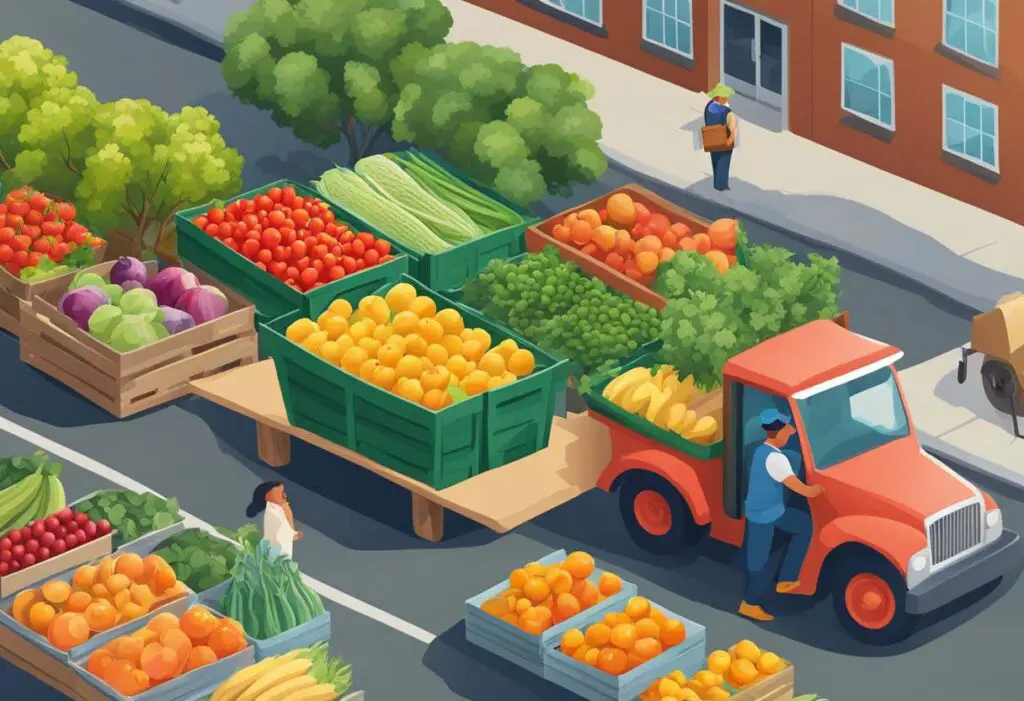
By purchasing locally grown produce and supporting sustainable agricultural practices, you can:
- Incorporate more fruits and veggies into your diet (healthy)
- Reduce emissions from long-distance hauling (transportation)
- Save some money in your wallet! (my favorite part…)
Ready to learn more? Read on and I’ll give you all the know-how to get started.
Farm-to-table is a food concept and an agricultural process that connects consumers with fresh, healthy produce (and meats!) directly from a local source. By cutting out the middleman and purchasing directly from local farmers, you can save money on your grocery bill while supporting your local economy (and farmers!)
I happen to live where tractors and farm implements drive past my house multiple times a day during the growing season. I love seeing tractors and combines drive down the road. I’ve seen farmers working late into the night to plant and harvest with their uber-bright lights shining through my curtains, and I don’t mind one bit because I know their work is so important.
I admire what they do because I know it’s a labor of love, and…. I happen to like eating. They don’t do it for money; I see their homes and the vast majority are what I would classify as humble abodes. You will not get rich farming unless you are a giant conglomerate growing thousands of acres of food.
Farmland continues to slowly be eaten up by housing developments around the country and it always makes me a little sad to see it go. A study was published in 2020 stating that over 11 Million acres of farmland had been lost in the US since 2000. Being involved in the Farm to Table movement supports farmers and can help incentivize them to hold on to their land instead of selling to developers.
The Essence of Farm-to-Table
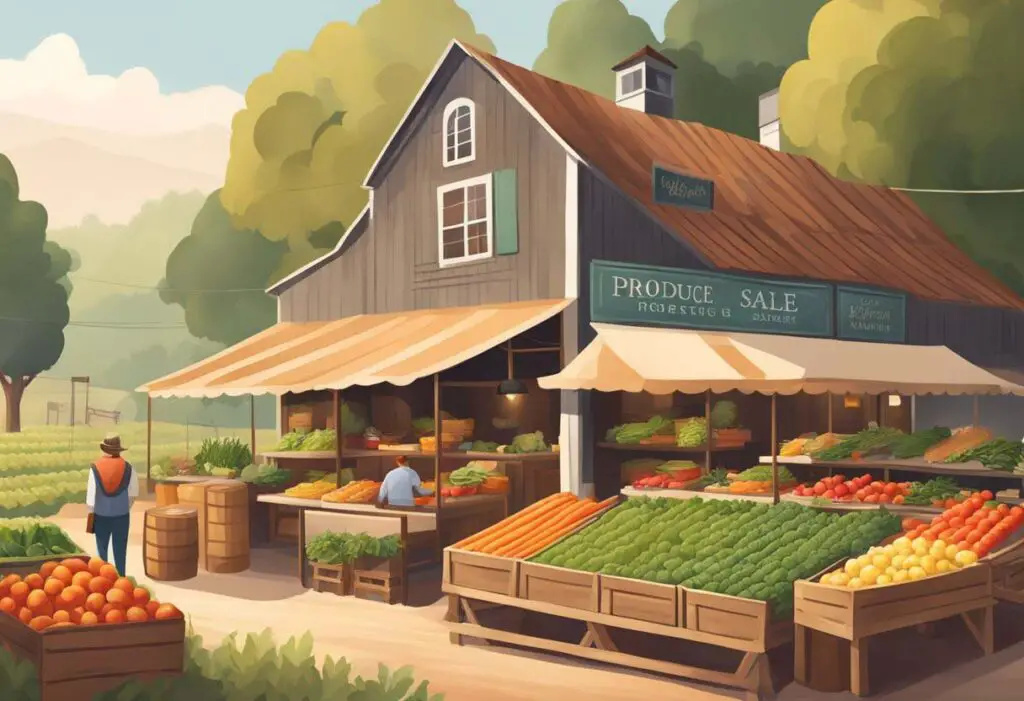
The Farm to Table approach to food sourcing emphasizes the importance of locally grown, seasonal produce and supports small-scale farmers in your community. Here’s what you need to know about the essence of farm-to-table.
Understanding the Farm-to-Table Movement
The farm-to-table movement is all about shortening the distance between the farm and your plate. This approach aims to minimize the distance food travels, ensuring freshness, and reducing carbon emissions. By buying locally, you’ll be supporting small-scale farmers in your community and helping to strengthen your local food system.
Core Principles of Farm-to-Table
At its core, farm-to-table is about valuing proximity, freshness, and transparency. This means that food is sourced as close to home as possible, and there’s a focus on using seasonal produce. You’ll also find that farm-to-table emphasizes the importance of understanding where your food comes from, and how it’s grown and harvested.
The Role of Community Supported Agriculture (CSA)
One way to get involved in the farm-to-table movement is through Community Supported Agriculture (CSA). CSA’s make it possible to purchase a ‘share’ of a local farm’s harvest, which is delivered to them regularly, usually weekly during the growing season. By participating in a CSA, you’ll be supporting a local farmer while also getting access to fresh, seasonal produce at a lower cost than what you might find at a grocery store. Check out localharvest.org to search for CSA’s in your area!
Benefits of Supporting Local Agriculture
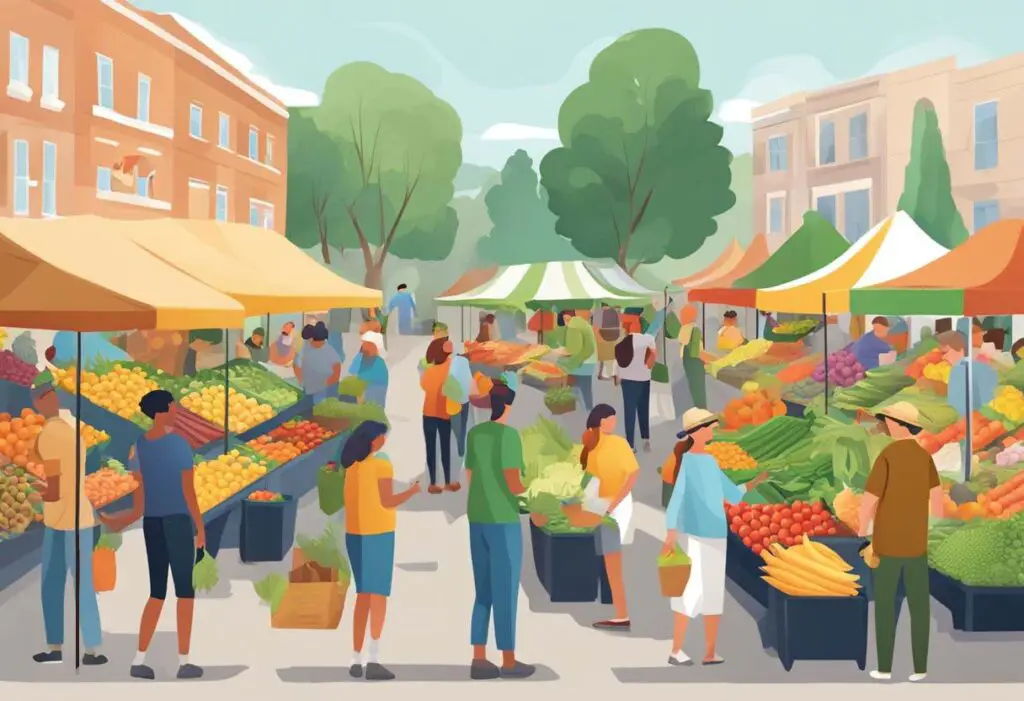
I enjoy visiting farmer’s markets because I can get to know my neighbors/community members and I feel great knowing my money is going to support them and not some giant corporation (sorry not sorry Walmart).
Economic Advantages for Local Communities
One of the primary benefits of supporting local agriculture is that it helps support the local economy. When you buy produce from local farmers, you are directly supporting their business and helping them to continue farming. This, in turn, helps to create jobs throughout rural America, supporting small and mid-sized farmers and revitalizing rural economies.
According to the USDA, local food systems create 13 jobs per $1 million in sales, compared to just three jobs per $1 million in sales for corporate food systems.
Environmental Benefits and Sustainability
Another benefit of supporting local agriculture is that it helps reduce the environmental impact of food transportation. When you buy produce from local farmers, you are reducing the distance that your food needs to travel to get to your table. This, in turn, helps to reduce the carbon emissions associated with food transportation.
Additionally, local farmers are more likely to use sustainable agricultural practices that help to protect the environment. These practices include crop rotation, composting, and reduced pesticide use. By supporting local agriculture, you are helping to protect the environment and promote sustainable agricultural practices.
Health and Nutrition
Local farmers are more likely to grow a variety of fruits and vegetables that are in season and picked at the peak of ripeness. This means that the produce is more flavorful and packed with nutrients. Additionally, local farmers are more likely to use organic farming practices, which means that the produce is free from harmful pesticides and chemicals. By supporting local agriculture, you are getting healthy and nutritious food for you and your family.
Overall, supporting local agriculture has many benefits for both you and your community. By choosing to buy produce from local farmers, you are helping to support the local economy, reduce the environmental impact of food transportation, promote sustainable agricultural practices, and get fresh and nutritious food on your table.
Check out this related article: Batch Cooking Tips to Save Time and Money
Challenges and Considerations
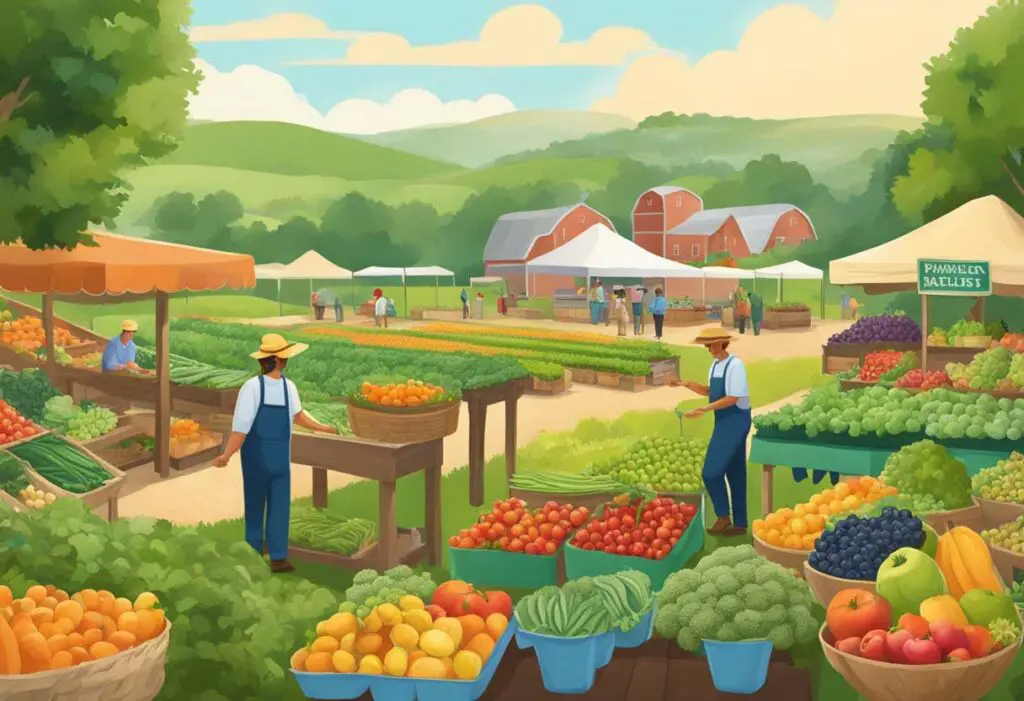
Supporting local agriculture has lots of benefits as we mentioned earlier. However, there are also challenges and considerations to keep in mind when making the switch from grocery store shopping to farm-to-table. Often fruits and vegetables purchased at farmers’ markets supplement what has already been purchased at a local grocery store because of the convenience of being able to purchase from a wide variety of items.
Balancing Cost and Accessibility
One of the main challenges of buying local produce is balancing cost and accessibility. While shopping at farmers’ markets and local farms can be more affordable than shopping at grocery stores, it can also be more expensive in some cases. Remember you’re there to save money, not drop a wad of cash on some cute homemade impulse buy.
It’s so important in today’s economy that you learn the average prices for the items you purchase regularly. The days of just filling our carts at the grocery store without paying attention to the price are over. By paying attention and learning those prices you can more easily spot the deals and steals you need. And don’t we all want deals and steals right now, amIright???
Addressing Transportation and Distribution
Another challenge in supporting local agriculture is transportation and distribution. Unlike grocery stores, which have established supply chains and distribution networks, local farms and farmers’ markets and CSA’s may have limited transportation options.
To save money consider carpooling with friends or neighbors to farmers’ markets, local farms and CSA’s. You can also look for local food co-ops that offer delivery or pickup options.
Ensuring Year-Round Food Security
Seasonal availability is another consideration when supporting local agriculture. While fresh produce is abundant during the growing season, it’s not really around during the winter months. So what is the solution to the off-season?
Consider good old preserving or canning during the growing season so you can enjoy it during the winter. You can also look for local farms that offer greenhouse-grown produce or consider supporting local food cooperatives that offer a wider variety of locally produced foods.
Overall, while there are challenges and considerations to keep in mind when supporting local agriculture, the benefits of fresher produce, a stronger local economy, and reduced environmental impact make it well worth the effort.
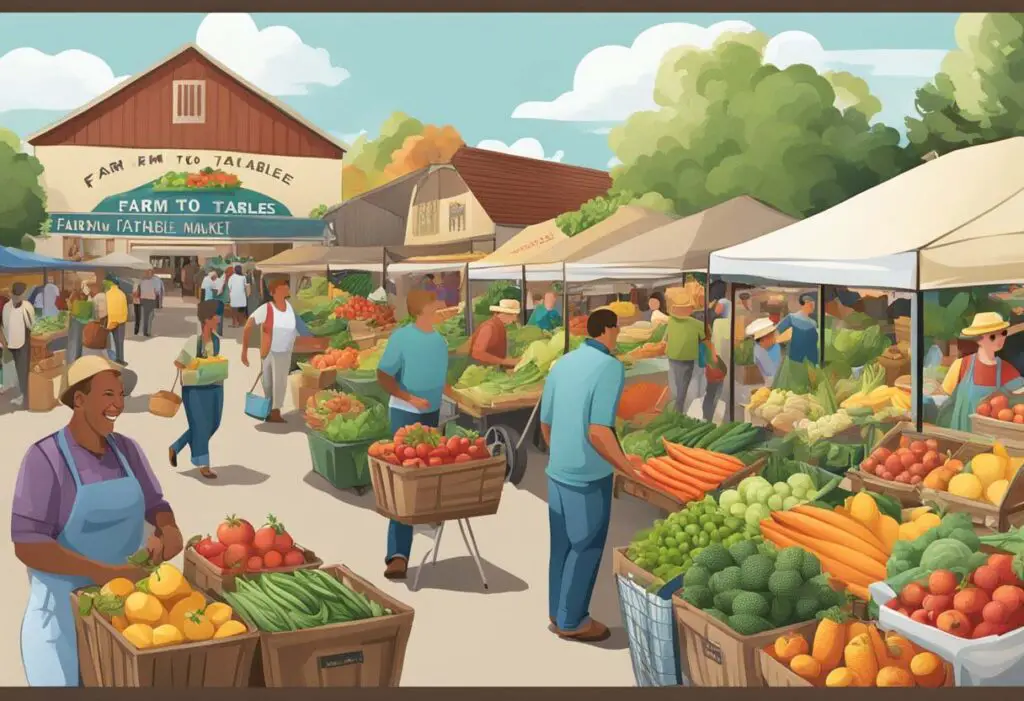
Incorporating Seasonal Produce into Meals
When you buy locally sourced and seasonal produce, you’ll often find that it’s more affordable than out-of-season produce that has to be transported from far away. Plus, it’s fresher and tastier! (I mean, can you believe the price of strawberries in December?? Ridiculous!)
Incorporating seasonal produce into your meals is a great way to save money on your grocery bill while supporting local agriculture. Look for recipes that feature seasonal produce, or simply add it to your favorite dishes. Check out this great guide by the Farmer’s Almanac for produce seasonality. You can customize it for your region!
By participating in the farm-to-table movement, you’re not only supporting local agriculture and economies, but you’re also getting fresher and more flavorful produce. Whether you choose to buy locally sourced products, engage with farmers markets and CSAs, or incorporate seasonal produce into your meals, you’re making a positive impact on your community and your wallet.
The Impact on Restaurants and Retail
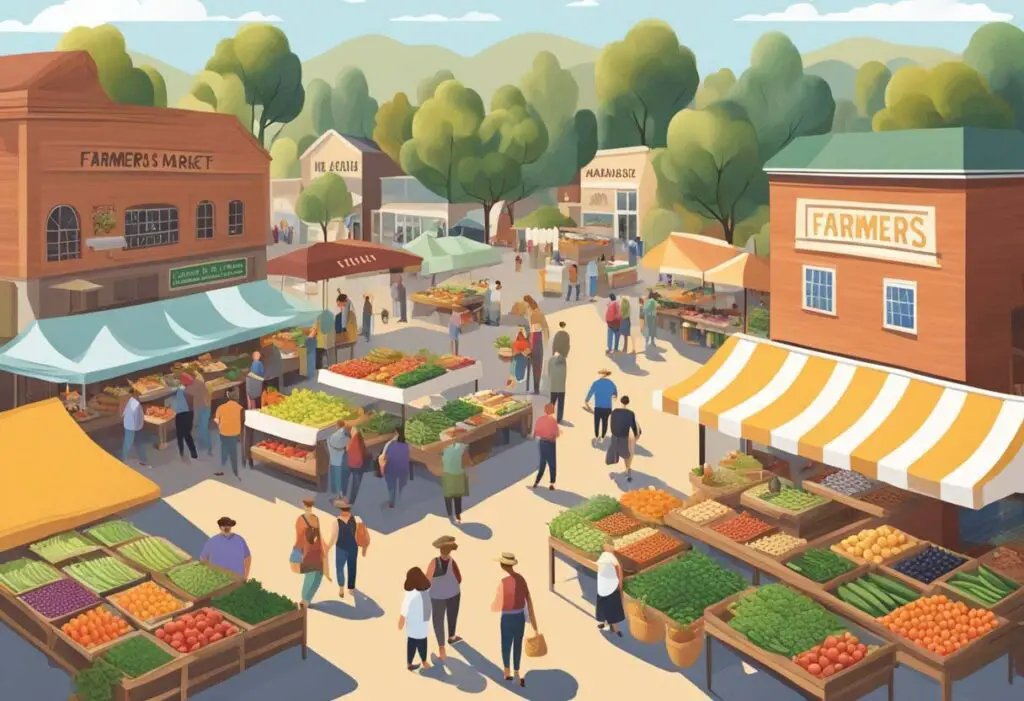
The Farm-to-Table movement has not only impacted consumers but also restaurants and retail businesses. Here are some ways in which local agriculture has influenced these industries.
Adapting Menus to Seasonal Availability
Smart restaurants will adapt their menus to reflect the seasonal availability of locally sourced produce. This helps them save money but also means that menus change frequently. Which can be a good thing! It gives customers a unique dining experience every time they visit and is a hallmark of a great restaurant (and chef). By using fresh, in-season ingredients, restaurants can create dishes that are not only delicious but also more affordable.
Forming Partnerships with Local Farms
To ensure a steady supply of fresh produce, many restaurants and retail businesses have formed partnerships with local farms. By working directly with local farmers, they can cut out the middleman and reduce costs, hopefully passing the savings on to you as well. This also supports the local agriculture economy.
Educating Customers on Farm-to-Table Benefits
Restaurants and retail businesses have also taken on the role of educating customers on the benefits of the Farm-to-Table concept. By explaining the importance of supporting local agriculture, businesses can encourage customers to choose locally sourced products. This not only benefits the local economy but also promotes sustainability and reduces the carbon footprint of food transportation.
In conclusion, the Farm-to-Table movement has had a significant impact on the restaurant and retail industries. By adapting menus to seasonal availability, forming partnerships with local farms, and educating customers on the benefits of local agriculture, businesses can support sustainable and affordable food systems while providing customers with fresh and delicious meals.
Fostering Community and Education
As I mentioned earlier, when you support local agriculture, you are not only contributing to the local economy but also fostering a sense of community. Building relationships with local farmers is an essential part of supporting local agriculture. If you haven’t yet, try visiting your local farmer’s market. You may be delighted by who you meet and what you find!
By getting to know your local farmers, you can learn about their farming practices, the crops they grow, and the challenges they face. This knowledge can help you make informed decisions about the food you eat and the products you buy.
Promoting Educational Programs
Supporting local agriculture can also mean promoting educational programs that help people learn about where their food comes from and how it is produced. Did you know there is a National Farm to School Network? It’s a program that promotes education about local food systems by connecting schools with local farmers to provide fresh, healthy food to students and to teach them about the importance of eating locally grown food.
In summary, supporting local agriculture is not just about buying local food. It is about building relationships with local farmers, promoting educational programs, and contributing to local food policy development. By doing so, you can help foster a sense of community and support a more sustainable and equitable food system for everyone.
Looking Forward
As you continue to embrace the farm-to-table movement, you can look forward to exciting innovations in sustainable farming. Farmers are constantly experimenting with new techniques to improve the quality, yield, and sustainability of their crops. From hydroponics to vertical farming, these innovations are making it easier for farmers to grow fresh produce in urban areas and other regions where space is limited.
Innovations in Sustainable Farming
One such innovation is aquaponics, a system that combines aquaculture (raising fish) and hydroponics (growing plants in water). This closed-loop system is highly efficient and sustainable, as the fish waste provides nutrients for the plants, which in turn filter the water for the fish. Aquaponics is also a great way to grow fresh produce in urban areas where space is limited.
Another innovation is regenerative agriculture, a holistic approach to farming that focuses on building healthy soil, increasing biodiversity, and reducing the use of synthetic inputs. Regenerative agriculture not only produces healthier crops but also helps to mitigate climate change by sequestering carbon in the soil.
The Future of Urban Agriculture
With all this talk of Farm to table, don’t forget you can have a little ‘farm’ of your own at home! If you enjoy cooking with fresh herbs you can save money by growing your favorite fresh herbs in pots in your kitchen, or have one or more of your favorite vegetables growing in pots on your front or back porch, or incorporated into your landscaping.
Urban agriculture is definitely on the rise, as more and more people are becoming interested in growing their own food. From community gardens to rooftop farms, urban agriculture is a great way to support local food systems while also greening our cities.
In the future, I hope to see even more innovations in urban agriculture, such as vertical farms and aquaponic systems. These systems are highly efficient and can produce large quantities of fresh produce in a small amount of space (or even IN space!).
Expanding the Reach of Local Food
As you continue to support local agriculture, you can look forward to a future that is more cost-effective, more sustainable, more resilient, and more delicious!
In summary, the farm-to-table movement is worth looking into to keep within your food budget and save money on your bottom line. Plus you’ll be supporting local agriculture while also enjoying fresh, seasonal produce. By understanding the core principles of farm-to-table and participating in programs like CSA, you can help to strengthen your local food system while also saving on your grocery bill.







2 Comments